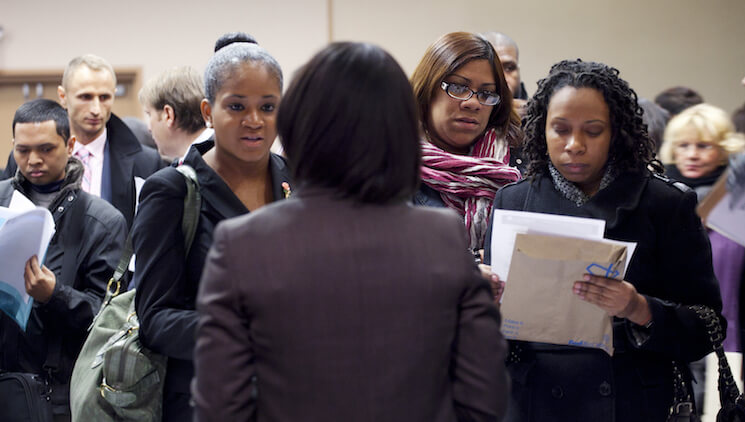Do extended U.S. unemployment insurance benefits reduce employment?

During the Great Recession, the federal and state governments extended the amount of weeks unemployed workers were eligible for unemployment insurance. And then, in 2014, as the U.S. labor market recovery started to pick up, those benefits were reduced. Clearly the deep recession of 2007-2009 and the subsequent recovery were the main drivers behind the fluctuations in the health of the labor market. But perhaps the extended unemployment benefits increased the unemployment rate a bit more—and then the reduction in benefits pushed the rate up even more?
Well, some new research should make us skeptical that unemployment insurance had such a large impact. The new paper is by economists Christopher Boone of Cornell University, Arindrajit Dube of the University of Massachusetts Amherst, and Lucas Goodman and Ethan Kaplan of the University of Maryland at College Park. They specifically look at the impact of the expansion and then contraction of extended unemployment benefits from 2007 to 2014, looking specifically at the duration of those benefits. The technique they use should be familiar to anyone who’s followed the debates about the impact of the minimum wage. Because states differ in how long they offer unemployment benefits, the economist can pair bordering counties, which should be similar in many ways expect benefit duration, and see the difference in employment.
Their results show that the difference in the employment rate for bordering counties doesn’t change much in response to increases or decreases in extended unemployment benefits. The paper runs several “robustness checks” to see if the results change if other techniques find different results. And these alternate techniques find very similar results: a very small effect of unemployment benefits on employment. It’s possible that extended benefits induced some unemployed people to hold off on getting a job for a bit longer, but on average a longer period of receiving benefits doesn’t seem to have that big of an impact on aggregate employment.
Now, other recent research on this question finds a large and significant impact of more generous unemployment benefits. Boone and his co-authors replicate the findings of those papers and find two reasons why their results differ so much. One reason is a difference in statistical techniques that is too complex to go into here. Another difference is that the other papers use data from the Local Area Unemployment Statistics series, which is constructed in part by a model. The new paper by Boone and his co-authors instead relies on administrative data from the Quarterly Census of Employment and Wages, which is derived from actual unemployment insurance records.
But another puzzle seems more difficult to solve. The new paper finds that the authors’ macro estimates of the effects of extended unemployment insurance is quite small on overall employment levels, yet other papers that look at the micro effect—or the effect on specific individuals—find a noticeable negative effect that would push up unemployment. Boone, Dube, Goodman, and Kaplan rectify this difference by showing that the micro estimates could be true while the aggregate impact remains small as unemployment insurance injects more demand into the economy. The end result is a U.S. labor market where unemployment hasn’t been pushed upward, but more workers are protected against some of the pains of losing a job.
